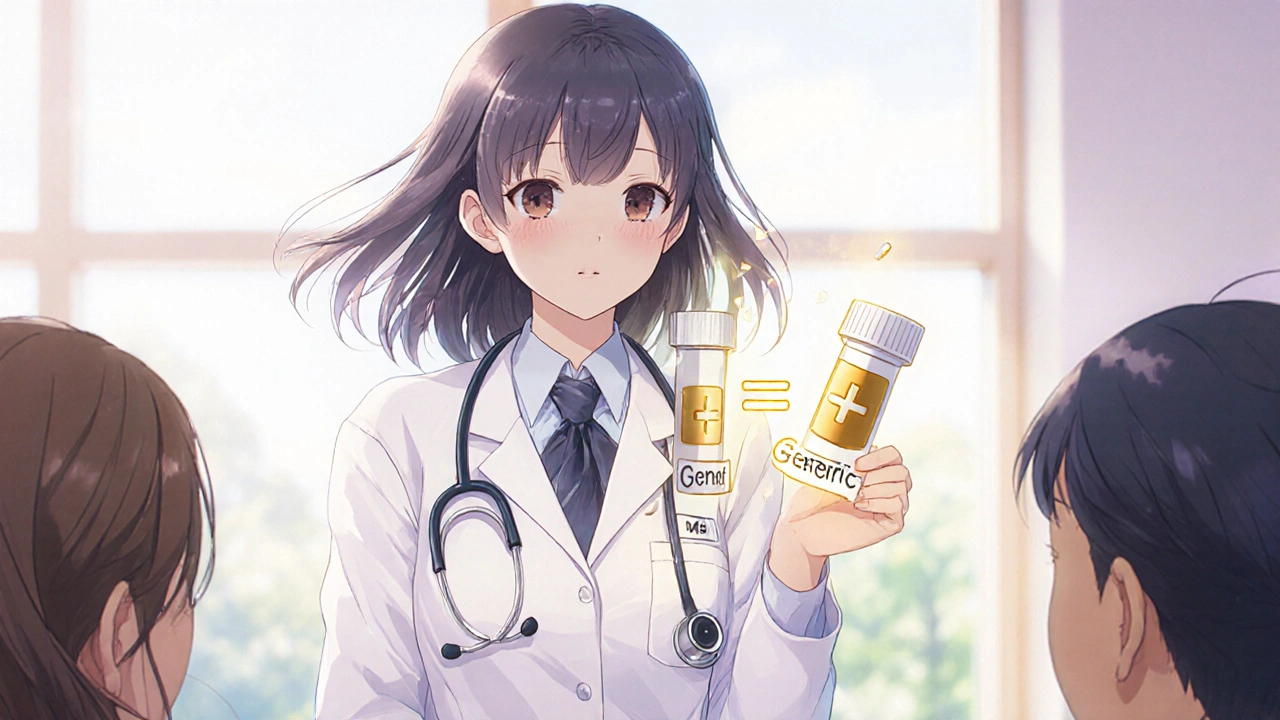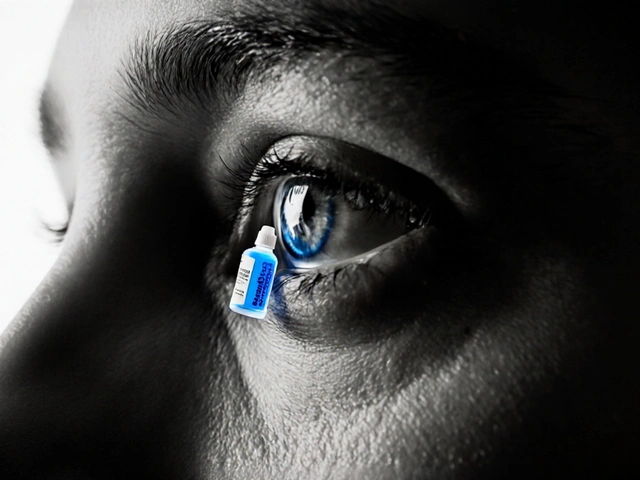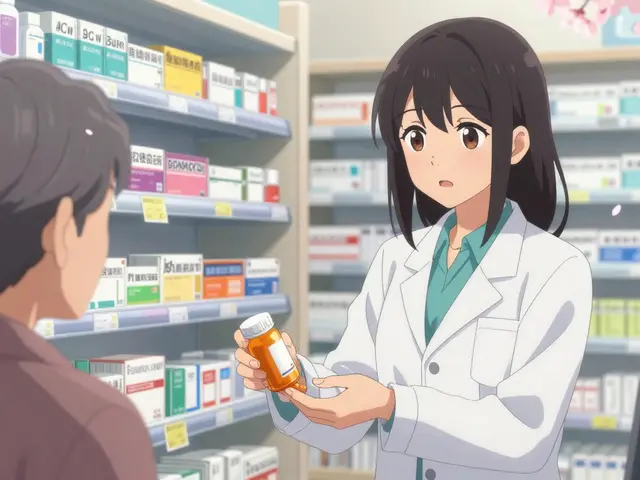
For over 40 years, generic drugs have been saving the U.S. healthcare system billions. In 2022, generic drugs made up 90% of all prescriptions filled-but only 23% of total drug spending. That’s a massive cost savings. Yet, despite this clear economic advantage, many clinicians still hesitate to prescribe them. Why? Because many don’t fully understand how generics work-or worse, they believe they’re less effective.
A 2017 study found that 68% of physicians had at least some doubt about whether generics were truly equivalent to brand-name drugs. That’s not just a knowledge gap-it’s a barrier to better care. Patients are 35% more likely to start and stick with a medication if it’s generic. But if the doctor hesitates, the patient will too. The problem isn’t the drugs. It’s the education.
What Makes a Generic Drug Really Equivalent?
Generic drugs aren’t copies. They’re exact matches-by law. The FDA requires them to have the same active ingredient, strength, dosage form, and route of administration as the brand-name drug. That’s not a suggestion. It’s a legal requirement. And it’s backed by hard science.
To get approved, a generic must prove bioequivalence. That means its absorption in the body must fall within 80% to 125% of the brand-name drug’s absorption. This isn’t a rough estimate-it’s a strict statistical range based on the 90% confidence interval for AUC (area under the curve) and Cmax (peak concentration). If a generic doesn’t meet this, it doesn’t get approved. No exceptions.
What about inactive ingredients? Those can differ. Fillers, dyes, preservatives-those aren’t required to match. But here’s the key: they can’t affect safety or effectiveness. A 2020 survey of 1,200 prescribers found that 45% incorrectly believed generics had to match inactive ingredients exactly. That’s a myth. And it’s one that leads to unnecessary hesitation.
The FDA’s Orange Book lists every approved drug and assigns a therapeutic equivalence rating. An ‘A’ rating means the drug is interchangeable with the brand. A ‘B’ rating means it’s not. Most generics are ‘A.’ If a doctor sees a ‘B’ rating, they should know why-maybe it’s a complex formulation, or the drug has a narrow therapeutic index. But for the vast majority of prescriptions, ‘A’ means it’s safe and effective.
Why Do Doctors Still Prefer Brand Names?
It’s not always about science. It’s about habit.
A 2019 national survey found that 62% of physicians still predominantly use brand names when writing prescriptions-even though medical students learn generic names in school. Why? Because brand names are easier to say. “Lopressor” rolls off the tongue faster than “metoprolol tartrate.” But when a patient hears “Lopressor,” they assume it’s different from the generic they see at the pharmacy. That confusion can lead to non-adherence.
Another big issue? Misunderstanding manufacturing standards. A 2020 survey showed 38% of clinicians believed generic drugs were made in lower-quality facilities. That’s false. The same factories often make both brand and generic versions. The FDA inspects them all using the same standards. In fact, many generics are made by the same companies that make the brand-name drugs.
Then there’s the myth about active ingredient content. About 27% of prescribers thought generics might contain 20-25% less active ingredient. That’s not just wrong-it’s dangerous. The FDA requires exact equivalence in active ingredient amount. No more, no less.
These misconceptions aren’t just academic. They directly impact care. A 2021 study showed that when clinicians used brand names in prescribing, patients were more likely to report side effects-even when taking a generic. That’s the nocebo effect in action: expecting a problem creates one. When providers explicitly say, “This generic is the same as the brand,” patient-reported side effects drop by 18%.

What Kind of Education Actually Works?
Not all education is created equal. Handouts and webinars? They help, but barely. A 2021 JAMA Internal Medicine study compared two approaches: passive (fact sheets) and active (interactive case-based learning). After six months, the group that did case-based learning retained 42% more knowledge. Why? Because they didn’t just memorize facts-they practiced applying them.
Real change happens when education is embedded in workflow. The University of California San Francisco Medical Center reduced brand-name statin prescriptions by 37% in one year by doing three things:
- Training residents and attendings in a 90-minute workshop on bioequivalence
- Adding an EHR alert that pops up when a brand-name statin is selected, suggesting a generic alternative
- Having pharmacists flag prescriptions where the prescriber used the brand name, then following up with a quick conversation
That’s not just education-it’s system change.
Other successful models include academic detailing-where trained pharmacists or educators visit clinics one-on-one to review prescribing patterns. One program in a large Midwest health system increased generic prescribing by 29% in just four months using this method.
And now, there’s VR. The FDA launched a virtual reality training module in 2023 where clinicians practice having conversations with simulated patients who are skeptical about generics. Early results show a 41% increase in provider confidence when talking about equivalence.
Where Education Makes the Biggest Difference
Some conditions benefit more from generic education than others. Psychiatric medications are a top example. Patients taking antidepressants or antipsychotics are especially vulnerable to nocebo effects. If they believe the generic won’t work, they’re more likely to stop taking it-even if it’s identical. Providers who explicitly endorse generics see 3.2 times higher adherence rates.
Chronic diseases like hypertension, diabetes, and high cholesterol are another big win. These are lifelong treatments. Cost matters. A 2020 ASPE brief found that patients on generic blood pressure meds were 40% more likely to refill their prescriptions than those on brand-name versions. For someone on a fixed income, that’s not just a savings-it’s a lifeline.
But not all drugs are equal. Biosimilars-complex biologic drugs-are a different story. Only 28% of oncologists could correctly explain the difference between a generic small molecule and a biosimilar large molecule. That’s a knowledge gap with real consequences. Biosimilars aren’t generics. They’re highly similar versions of complex proteins. They require different education. And right now, most clinicians aren’t getting it.
Barriers to Change-and How to Overcome Them
Time is the biggest enemy. A 2021 AMA survey found that 89% of physicians feel they don’t have time to learn more about generics. But you don’t need hours. You need 15 minutes a week.
Start here:
- Use the FDA’s free Generic Drug Facts Handout (148KB PDF). Print it. Keep it on your desk.
- When you write a prescription, say the generic name first. “Metoprolol, not Lopressor.”
- When a patient asks, “Is this the same?” say, “Yes. It has the same active ingredient, same dose, same effect. The FDA requires it.”
- Ask your pharmacy if they can flag brand-name prescriptions that could be switched.
Integration with EHRs is key. If your system doesn’t have a generic substitution prompt, ask your IT team to add one. In a 2023 pilot, AI-driven alerts increased generic acceptance by 24%.
State laws also matter. In 34 states, pharmacists can substitute a generic without asking the prescriber. In 16 states, you must write “dispense as written” to block substitution. Know your state’s rules. If you don’t, you might be accidentally blocking a patient’s access to lower-cost meds.
The Future of Generic Prescribing
Change is coming fast. In 2025, Medicare’s Merit-based Incentive Payment System (MIPS) will start tracking generic prescribing rates as a quality metric. Hospitals and health systems that don’t prioritize this will lose money.
Big insurers are already ahead. UnitedHealthcare’s 2024 pilot used AI to identify doctors who rarely prescribe generics-and sent them personalized educational content. Those doctors increased generic prescribing by 28%.
The goal isn’t to eliminate brand-name drugs. It’s to use them only when they’re truly needed. For 90% of prescriptions, that’s not the case.
Providers who understand generics don’t just save money. They save lives. Patients who take their meds consistently live longer, avoid hospitalizations, and have better outcomes. And it starts with one simple thing: a clinician who believes in the generic-and says so out loud.
Are generic drugs really as effective as brand-name drugs?
Yes. By law, generic drugs must contain the same active ingredient, strength, dosage form, and route of administration as the brand-name version. The FDA requires them to prove bioequivalence-meaning their absorption in the body must be within 80-125% of the brand. This is not a guess. It’s a strict scientific standard. Over 90% of generics are rated ‘A’ in the FDA’s Orange Book, meaning they’re interchangeable.
Why do some doctors still prefer prescribing brand-name drugs?
Many doctors use brand names out of habit or because they’re easier to say. Others have outdated beliefs-like thinking generics are made in lower-quality facilities or contain less active ingredient. These are myths. A 2020 survey found 38% of prescribers incorrectly believed generic manufacturing standards were lower. In reality, the same factories often produce both brand and generic versions under the same FDA inspections.
Do inactive ingredients in generics affect how well they work?
No. Inactive ingredients-like fillers or dyes-can differ between brand and generic, but they cannot affect safety or effectiveness. The FDA requires that any difference in inactive ingredients must not alter how the drug is absorbed or used by the body. If a generic had an inactive ingredient that caused problems, it wouldn’t be approved.
Can pharmacists substitute generics without the doctor’s permission?
In 34 states, yes. Pharmacists can substitute a generic for a brand-name drug without asking the prescriber, as long as it’s rated ‘A’ in the FDA’s Orange Book. In 16 states, the prescriber must write “dispense as written” to prevent substitution. In 19 states, pharmacists can substitute without any notation. Knowing your state’s rules helps avoid confusion and ensures patients get the most affordable option.
What’s the difference between a generic and a biosimilar?
Generics are exact copies of small-molecule drugs-like pills for blood pressure or diabetes. Biosimilars are highly similar versions of complex biologic drugs-like injections for cancer or autoimmune diseases. They’re not exact copies because biologics are made from living cells. Biosimilars require different testing and approval processes. Only 28% of oncologists correctly understand this distinction, which is why targeted education is critical for specialty areas.
How can I start improving my knowledge of generics?
Start with the FDA’s free prescriber toolkit, including the Generic Drug Facts Handout and the Generic Drugs and Health Equity Handout. Spend 15 minutes a week reviewing one concept-like bioequivalence or Orange Book ratings. Use EHR alerts if your system has them. Talk to your pharmacist. Attend a 90-minute CME session on generics. Small steps add up. One study showed that four 90-minute sessions spaced over six months led to 52% higher knowledge retention than a single lecture.





Comments (13)
Aidan McCord-Amasis
Bro, I just prescribed a generic yesterday and my patient cried. Not from joy. From fear. 😭
Katie Baker
Same. I started saying 'This is the exact same pill, just cheaper' and my adherence rates jumped. People just need to hear it straight.
No magic. No conspiracy. Just science and savings.
Kihya Beitz
Oh great, another ‘education solves everything’ fairy tale. You think doctors don’t know this? We’ve been told since med school.
The real issue? Pharma reps hand out free samples of brand names like candy. Generics? Not so much. And patients who get a free sample of Lopressor? They never want to switch.
Stop blaming the doctors. Blame the system that pays them to ignore generics.
Adam Dille
Y’all are overcomplicating this.
Generic = same drug. Brand = same drug + marketing + fancy packaging.
I’ve taken both. My blood pressure didn’t care. My wallet did.
Stop overthinking it. Just prescribe the cheaper one. 😎
Jennifer Walton
The question isn’t whether generics work.
It’s why we still treat medicine like a religion instead of a science.
Edward Ward
There’s a deeper epistemological issue here: if clinicians distrust the FDA’s bioequivalence standards - which are statistically rigorous, peer-reviewed, and replicated across thousands of trials - then what does that say about the foundation of clinical decision-making?
It’s not just about generics. It’s about epistemic humility. We’re trained to trust authority, yet when authority contradicts anecdotal experience (e.g., ‘my patient felt worse on the generic’), we default to the anecdote - even though it’s statistically irrelevant.
This isn’t ignorance. It’s cognitive dissonance dressed up as clinical judgment. And until we address the psychology behind it, no handout, no EHR alert, no VR simulation will fix the problem.
Education must target the emotional architecture of prescribing, not just the factual gaps.
John Foster
Let’s be real. The FDA doesn’t regulate anything anymore.
Generics? Made in China. In a basement. With a guy named Li who’s been paid in noodles.
I’ve seen patients break out in rashes on generics. Brand-name? Nothing. Coincidence? Maybe. But I’m not risking it.
And don’t get me started on the ‘same factory’ myth. That’s just PR spin. You think Pfizer and Teva share the same assembly line? Please. One’s a Fortune 500 titan. The other’s a discount bin in a warehouse in Mumbai.
And now they want us to use VR to ‘learn’ about this? Next they’ll put us in a simulation where we hug a pill bottle and say ‘I believe.’
Wake up. This isn’t science. It’s corporate propaganda wrapped in a white coat.
Andrew Eppich
It is imperative that medical professionals adhere to the highest standards of evidence-based practice. The FDA’s regulatory framework is not merely a guideline - it is the bedrock of pharmaceutical safety in the United States. To suggest otherwise is not only irresponsible, but a disservice to the public trust.
Moreover, the notion that physicians are ‘lazy’ for preferring brand names is both inaccurate and insulting. Clinical judgment requires nuance. Not every patient responds identically. To reduce this to a cost-saving metric is to reduce medicine to a spreadsheet.
Jessica Chambers
My grandma takes her generic blood pressure med. She’s 82. Still walks her dog every morning.
Meanwhile, my cousin’s on the brand-name version. Costs $400/month.
Guess who’s in the ER last week? 😏
Shyamal Spadoni
you think this is about education? nah. this is about the deep state and the pharmaceutical cabal controlling the narrative. the FDA? they’re owned. the bioequivalence range? 80-125%? that’s a joke. that means a generic could be 25% weaker and still be approved. 25%!!!
and dont get me started on the fact that most generics are made in india and china where they use toxic fillers and no one checks. the real story is hidden. they dont want you to know that your meds might be killing you slowly. they just want you to take the cheap one so the insurance companies win. its all a scam. wake up.
Ogonna Igbo
Why are you Americans so obsessed with generics? In Nigeria, we don’t even have access to brand-name drugs. We get whatever comes. Sometimes it’s good. Sometimes it’s not.
But you people have the resources to choose. And you’re arguing over 80-125%? That’s a luxury. We fight just to get any pill that doesn’t look like it was made in a microwave.
Stop lecturing us on education. Fix your own system first.
BABA SABKA
Let’s cut through the jargon. Biosimilars ≠ generics. Got it.
But here’s what nobody says: the real bottleneck is reimbursement. Insurance pays the same for brand and generic - so why bother switching? The system incentivizes inertia.
Fix the payment model. Then the education will follow. Until then? You’re just preaching to the choir with PowerPoint slides.
Chris Bryan
Generics are a socialist plot to devalue medicine.
My grandfather died because he was switched to a generic heart med. The FDA? A joke. The government? Complicit.
Real medicine isn’t cheap. It’s precise. And if you’re okay with 25% variability in your life-saving drug, you’re not a doctor - you’re a pawn.